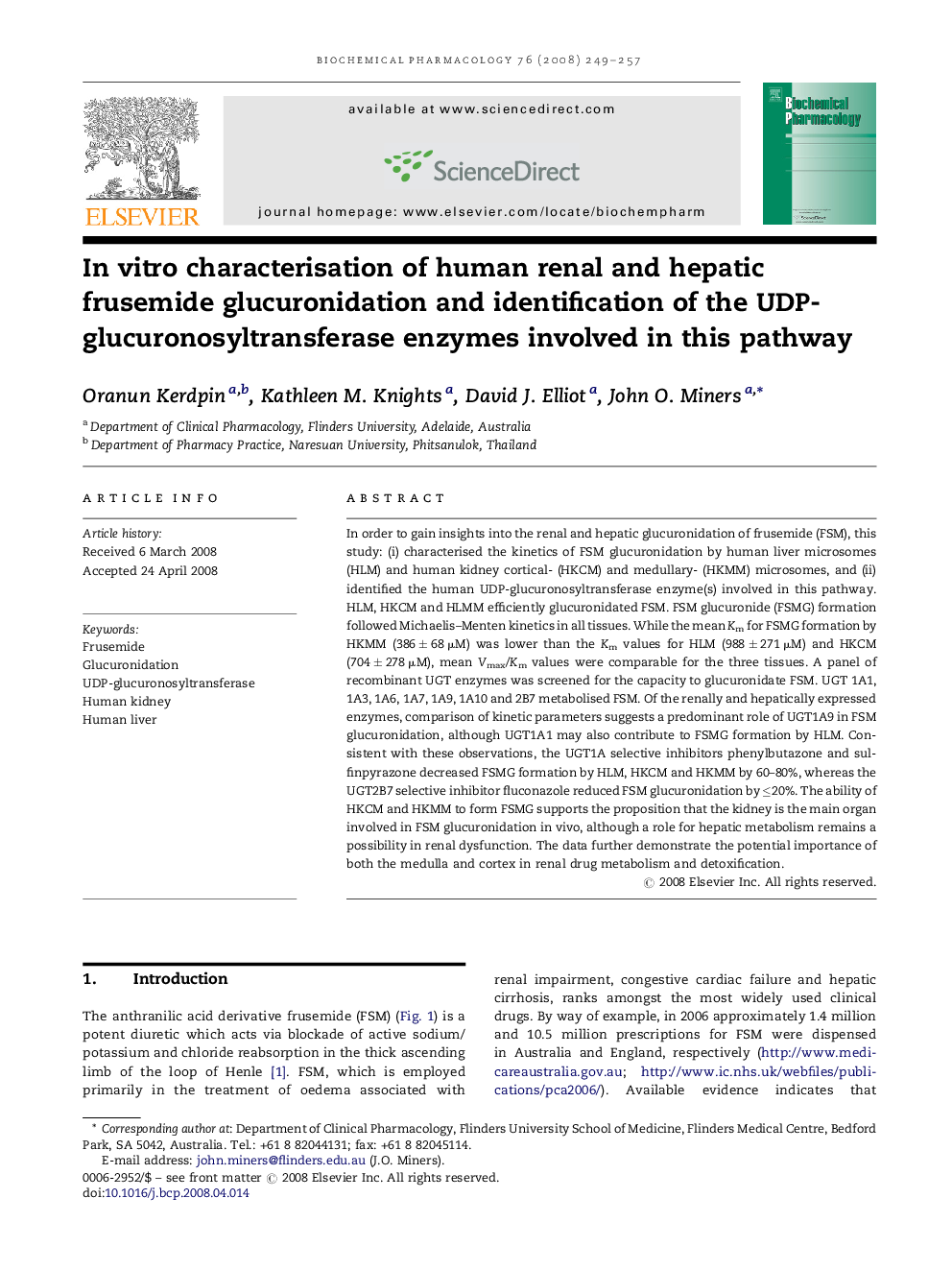| کد مقاله | کد نشریه | سال انتشار | مقاله انگلیسی | نسخه تمام متن |
|---|---|---|---|---|
| 2514315 | 1118461 | 2008 | 9 صفحه PDF | دانلود رایگان |

In order to gain insights into the renal and hepatic glucuronidation of frusemide (FSM), this study: (i) characterised the kinetics of FSM glucuronidation by human liver microsomes (HLM) and human kidney cortical- (HKCM) and medullary- (HKMM) microsomes, and (ii) identified the human UDP-glucuronosyltransferase enzyme(s) involved in this pathway. HLM, HKCM and HLMM efficiently glucuronidated FSM. FSM glucuronide (FSMG) formation followed Michaelis–Menten kinetics in all tissues. While the mean Km for FSMG formation by HKMM (386 ± 68 μM) was lower than the Km values for HLM (988 ± 271 μM) and HKCM (704 ± 278 μM), mean Vmax/Km values were comparable for the three tissues. A panel of recombinant UGT enzymes was screened for the capacity to glucuronidate FSM. UGT 1A1, 1A3, 1A6, 1A7, 1A9, 1A10 and 2B7 metabolised FSM. Of the renally and hepatically expressed enzymes, comparison of kinetic parameters suggests a predominant role of UGT1A9 in FSM glucuronidation, although UGT1A1 may also contribute to FSMG formation by HLM. Consistent with these observations, the UGT1A selective inhibitors phenylbutazone and sulfinpyrazone decreased FSMG formation by HLM, HKCM and HKMM by 60–80%, whereas the UGT2B7 selective inhibitor fluconazole reduced FSM glucuronidation by ≤20%. The ability of HKCM and HKMM to form FSMG supports the proposition that the kidney is the main organ involved in FSM glucuronidation in vivo, although a role for hepatic metabolism remains a possibility in renal dysfunction. The data further demonstrate the potential importance of both the medulla and cortex in renal drug metabolism and detoxification.
Journal: Biochemical Pharmacology - Volume 76, Issue 2, 15 July 2008, Pages 249–257